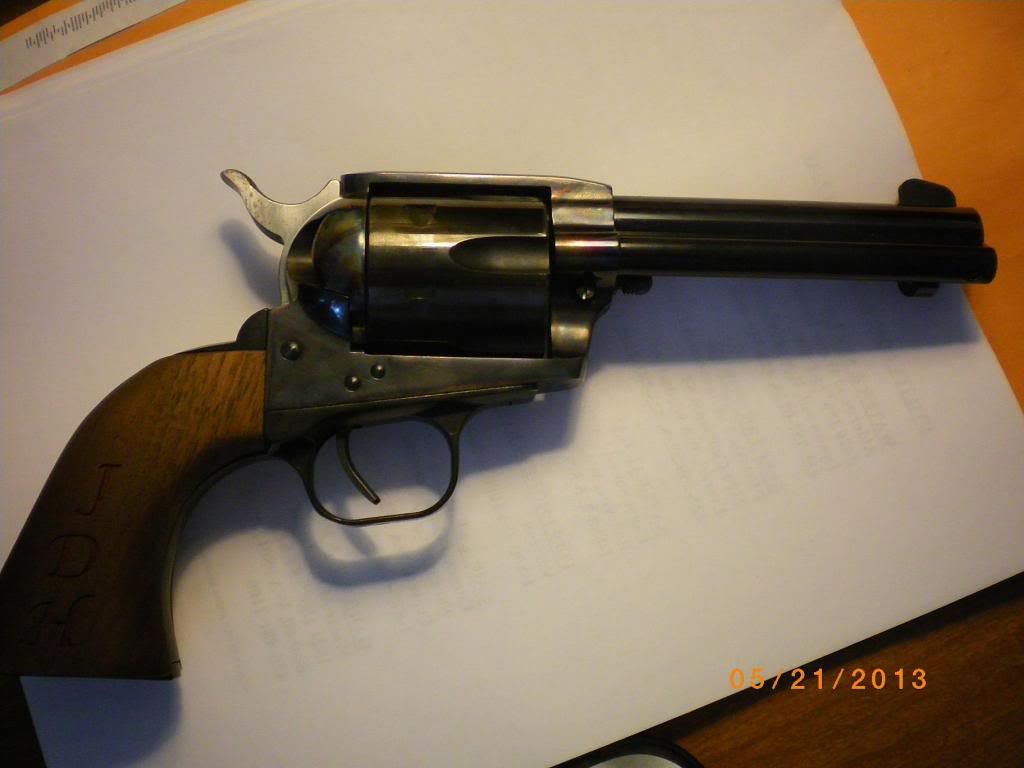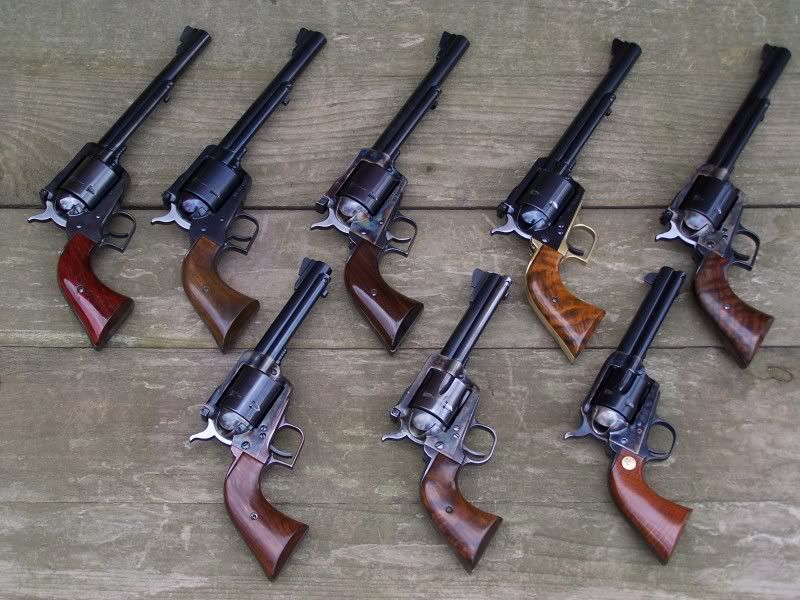I have a few single action guns. The mandatory Vaquero from 1982 with no transfer bar in 45LC, A HAWES western marshal from 1977 in 45LC again no transfer bar, a Uberti pre-cattle man from 1969 in .357 again no stupid transfer bar ..even a 80 dash super blackhawk in .44 ( so whats that 1969 or something? .but my favorite for some reason is my somewhat new EAA 4.75 inch bounty hunter with the stupid transfer bar in .357. It just feels better in my hand and seems to be the one that finds its self in my cowboy rig when I am doing chores around the house and fast drawing. Anyone else have a favorite that you thought you might hate?




